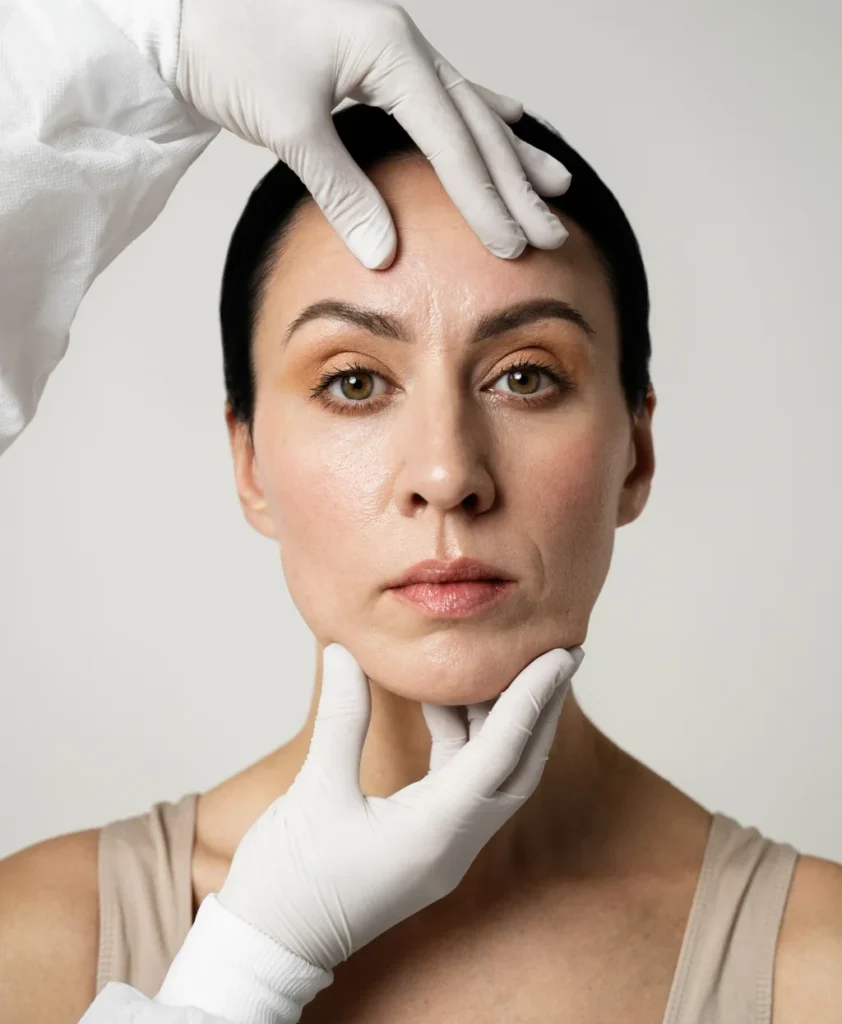Dr. Abraham uses neuromodulators to soften wrinkles and diminish the signs of aging.
- 16771 SW 12th Street, Suite C
- Sherwood, OR 97140
- United States

Dr. Abraham uses neuromodulators to soften wrinkles and diminish the signs of aging.
Neuromodulator Therapy, commonly referred to as Botox or Dysport treatments, works by temporarily blocking nerve signals to specific muscles, preventing them from contracting. It’s widely used in both medical and cosmetic fields.
In cosmetic applications, small amounts of Botox or Dysport are strategically injected into facial muscles to smooth out dynamic wrinkles, such as crow’s feet, frown lines, and forehead creases, offering a refreshed appearance. Results typically last three to six months, after which the muscle function gradually returns, requiring repeat sessions to maintain results.
Botox or Dysport injections are generally safe when administered by qualified professionals, with minor side effects like temporary bruising or swelling at the injection site. It’s essential, however, to consult with a licensed practitioner to assess suitability and discuss any potential risks associated with the treatment.
Neuromodulator therapy provides precise, targeted muscle relaxation, ensuring maximum efficiency in both medical and cosmetic applications. Small doses are injected directly into specific muscles, allowing for controlled, localized effects that reduce muscle contraction. This approach not only enhances aesthetic outcomes, such as smoothing wrinkles, but also effectively addresses medical conditions like migraines and muscle spasms, maximizing therapeutic benefits with minimal intervention.
The procedure is minimally invasive and requires no anesthesia or topical numbing. The injection process is quick, usually lasting 10-15 minutes, with little to no downtime. Patients often report a slight pinching sensation but minimal discomfort overall, making it a convenient option for individuals seeking fast, effective treatment with minimal disruption to daily life.
Neuromodulator therapy provides long-lasting results, with effects persisting for three to six months on average. The gradual return of muscle function over time ensures that patients don’t experience sudden changes. For cosmetic use, the skin appears smoother, and wrinkles are reduced, while medical applications see sustained relief from symptoms like muscle spasms or hyperhidrosis, reducing the frequency of treatment sessions.
Neuromodulator toxins used in therapy are FDA-approved and have undergone extensive clinical testing to ensure safety and efficacy. Only certified professionals are authorized to administer the treatment, adhering to stringent health standards. Side effects are generally mild and temporary, and risks are minimized when administered by licensed practitioners, ensuring a reliable and safe treatment experience.

Botox/Dysport is ideal for patients seeking to enhance their facial appearance without surgeries. If you want to reverse the signs of aging and maintain youthful, smooth, wrinkle-free skin, please contact our cosmetic injectors. We will carefully review your medical history, discuss your goals, and determine if you are suitable for Botox or Dysport injections.
During treatment, a licensed practitioner injects small amounts of Botulinum toxin into targeted muscles using a fine needle. The procedure typically takes 10-15 minutes, with minimal discomfort, and no anesthesia is required.
No, when done by a skilled professional, botulinum therapy softens wrinkles while preserving your natural facial expressions. The treatment targets specific muscles, allowing for subtle and natural-looking results.
No, Botox and Dysport do not affect sensation. The injections only relax muscle movement without impacting the skin’s sensory nerves, so you will still feel normal in the treated areas.
You can safely have another neuromodulator therapy treatment every 3-6 months, depending on how long the effects last for you. Your practitioner can recommend the best timing based on your response to the treatment.